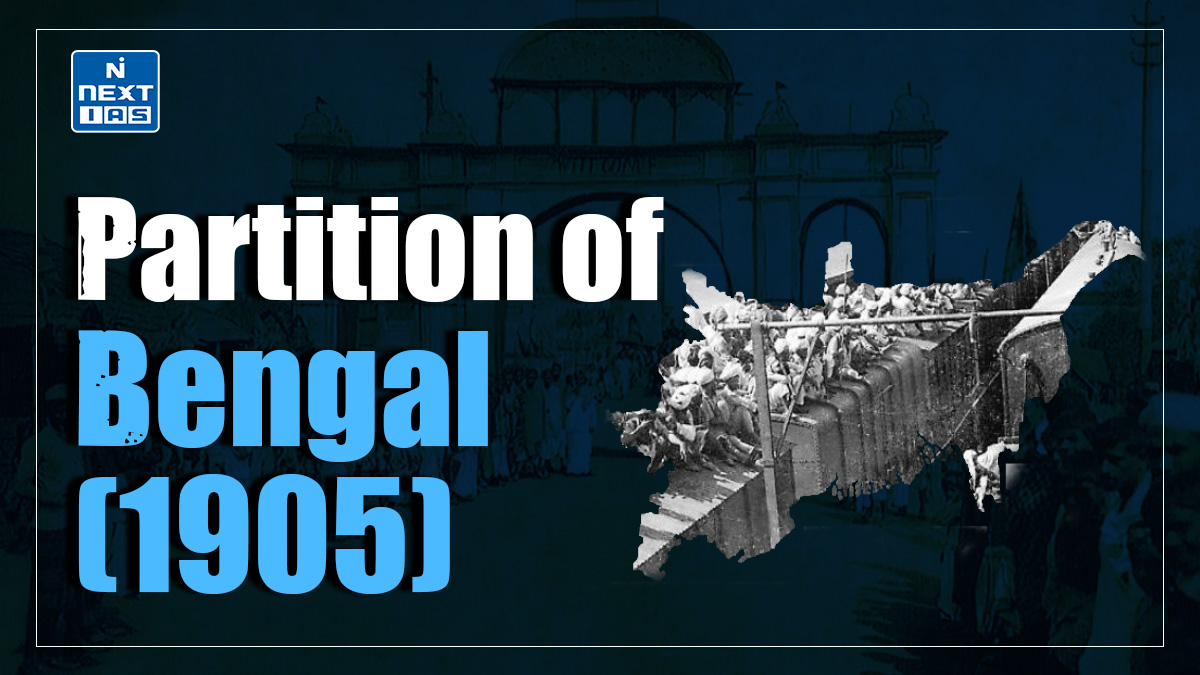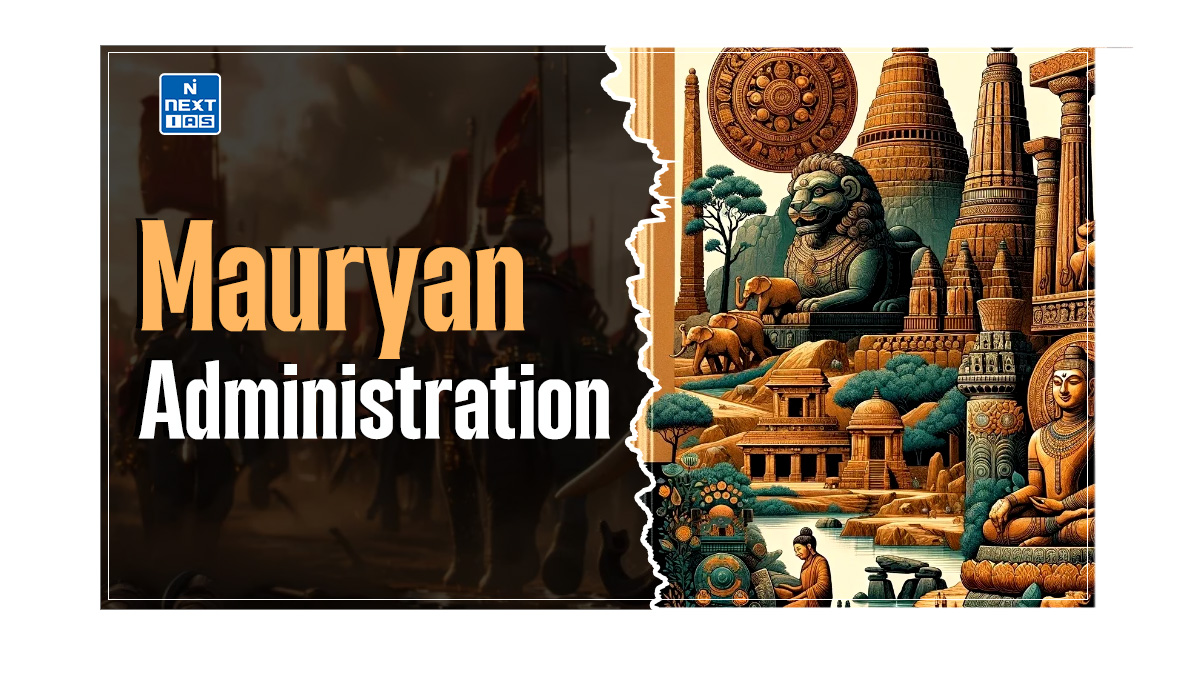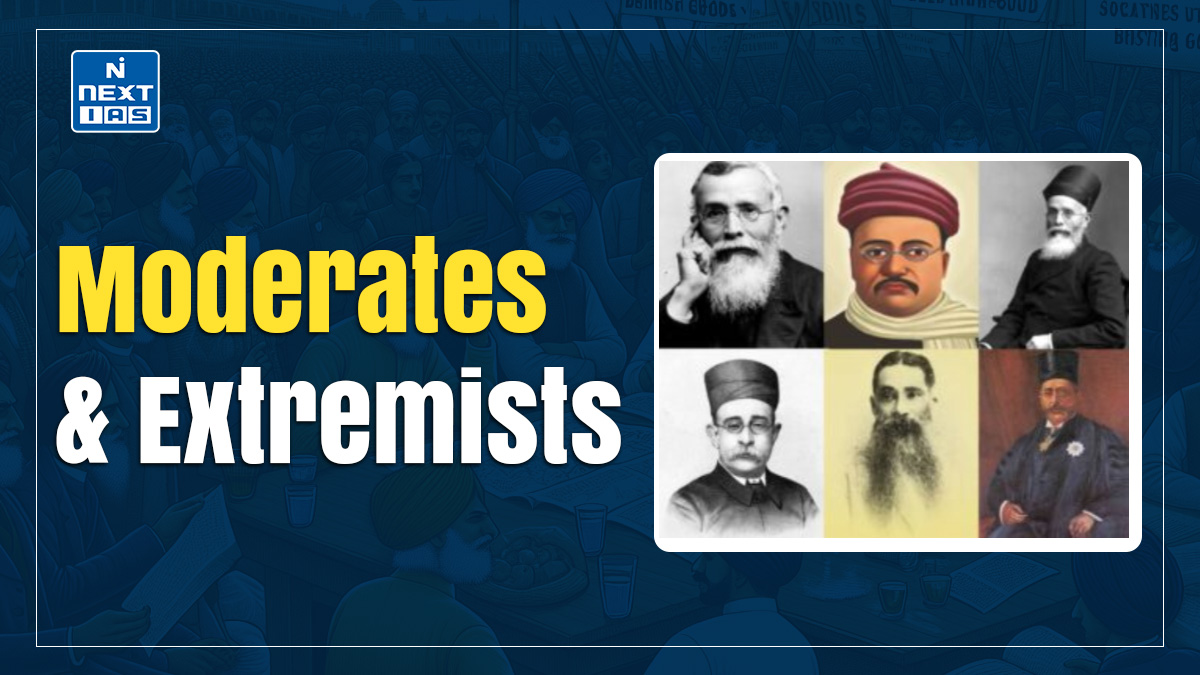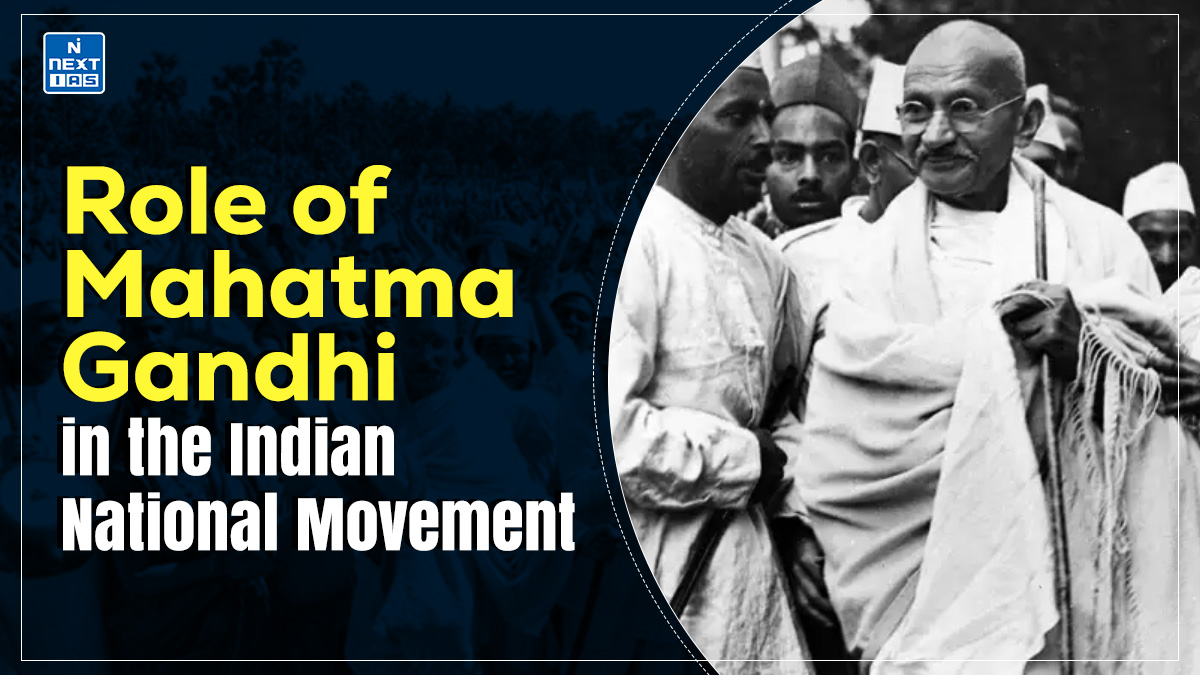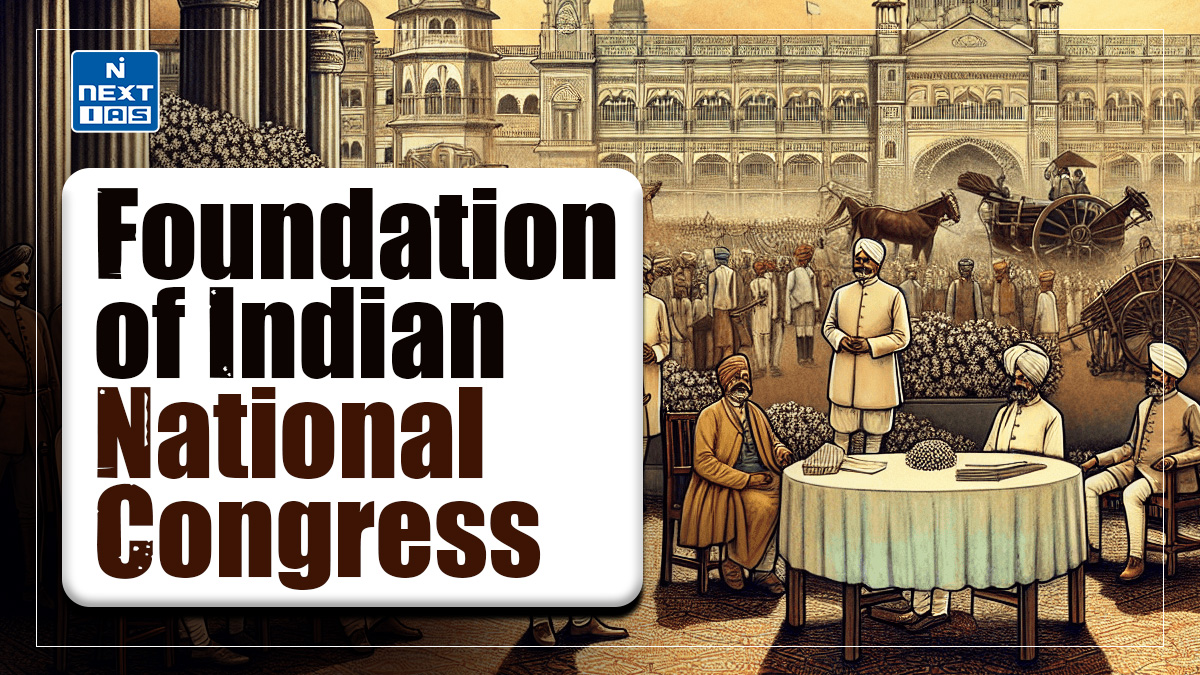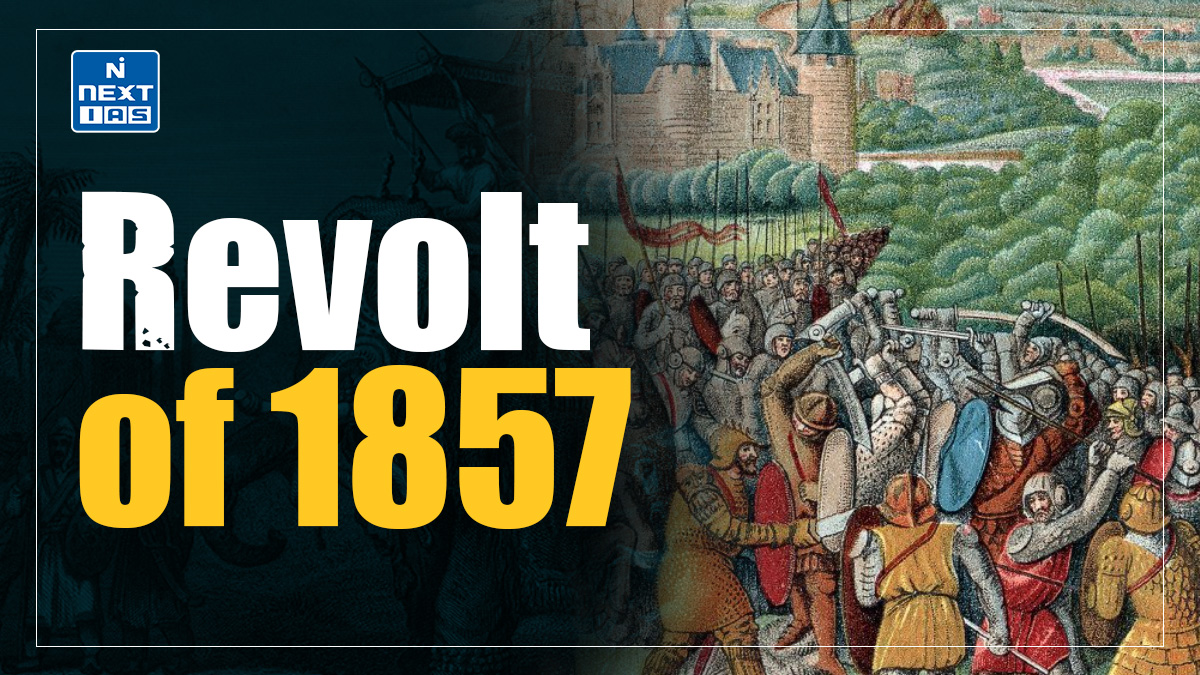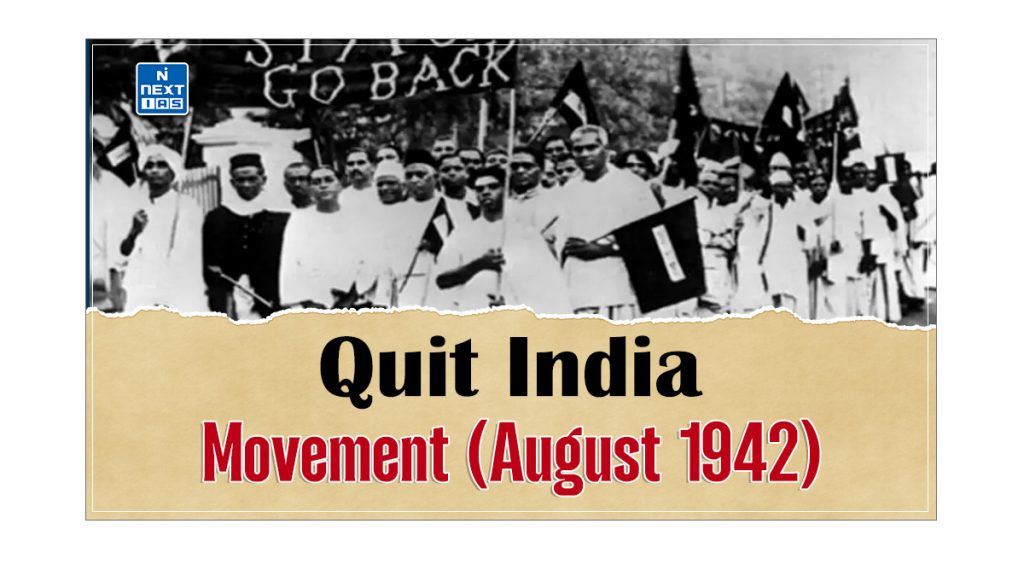
Quit India Movement (August 1942) was the last mass movement against the British in India. With its demand for the immediate end of British rule in India, the movement unfolded in a unique way wherein the masses not only participated but also took control of the movement. This article aims to study in detail the Quit India Movement 1942, its causes, progress, achievements, significance and other related aspects.
What is Quit India Movement 1942?
- The Quit India Movement 1942 was a mass Civil Disobedience Movement launched by Gandhi on August 8, 1942, at the Bombay session of the All India Congress Committee.
- The movement aimed to secure India’s independence from British rule.
Objectives of Quit India Movement
- The Quit India Movement sought to demand an immediate end to British rule in India in order to achieve full independence.
- The slogan “Quit India” became a rallying cry for the movement, symbolising the demand for the British to leave India.
Background of Quit India Movement 1942
- World War II: The movement was launched during World War II when Britain expected India’s full support. However, the Indian National Congress demanded independence before contributing to the war effort.
- Cripps Mission: The British government, in 1942, had sent Cripps Mission to India with an offer of limited self-government after the war. The proposals were rejected by the Congress as inadequate.
- Gandhi’s Stand: After the failure of the Cripps Mission, Gandhi adopted a stern attitude to pressure the British Government to quit India.
- It was towards this objective that Gandhi launched this movement.
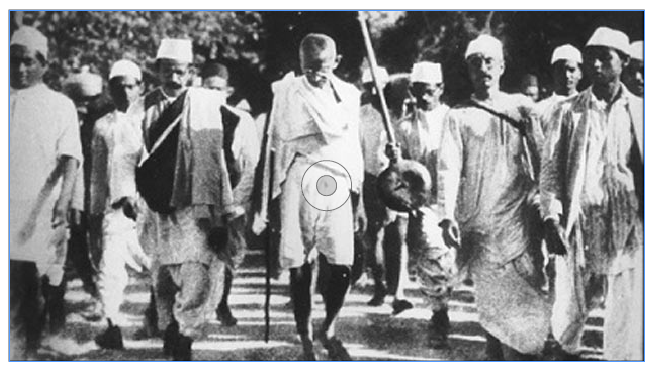
Reasons for Launch of Quit India Movement
The main reasons that made the nationalist leaders launch the Quit India Movement 1942 are as follows:
- The failure of the Cripps Mission (1942) had made it clear that British were not willing to offer any real constitutional advance to India during the War and would go on appropriating Indian help and men fighting for allied forces without its consent.
- The popular discontent was growing because of rising prices and war-time shortages, was gradually mounting and the time for expression of this discontent had come.
- There was an anticipation of an imminent collapse of the British empire.
- The incidents such as Allied reverses and British withdrawals from South-East Asia and Burma, etc. confirmed this feeling.
- The manner in which the British evacuation from Malaya and Burma had angered the masses.
- The British evacuated the white residents and largely left the local population to their fate.
- In order to build up their capacity to resist any future Japanese aggression, it was necessary to prepare people to defend themselves and their country for which a mass movement was needed now.
- Public confidence in the stability of British rule had reached an all-time low.
- There was a run on the banks, with people withdrawing deposits from post-office savings accounts and beginning to hoard gold, silver, and coins.
- Since people were anticipating overthrow of British rule in near future, it was essential to mobilize them during such a time and ensure maximum participation and success of the movement.
Proclamation of Quit India Movement 1942
- The Congress Working Committee met in Wardha on 14th July 1942 and adopted the famous “Quit India Resolution”.
- After the approval of the Congress Working Committee, Gandhi launched the movement in August 1942.
- Addressing the Conference, Gandhi gave the call of “Do or Die”, either to get India free or to die in this attempt.
Beginning of Quit India Movement
- The movement was launched on 9th August 1942, but the same in the morning itself, Gandhi and all other Congress leaders were arrested.
- The news of these arrests led to violent popular demonstrations, which soon spread over the whole of India.
- Spontaneous acts of protest in the form of hartals, strikes and processions took place.
- In the absence of leaders, it was impossible to continue the movement in a non-violent mode.
- The people disrupted railway lines, burnt down police and railway stations, and destroyed telephone and telegraph lines.
British Response to Quit India Movement 1942
- The British responded to the movement by mass arrests and public flogging.
- Thousands of innocent people died in this violent suppression.
- The Congress leadership was cut off from the rest of the world.
- The police used force to disperse the public meetings.
- They even fired and “lathi charged” at the public.
- The Congress was affirmed an illegal association.
- Tens of thousands were arrested, and the police used the most cruel methods to quell the unrest.
- The brutal repression succeeded in fizzling out the mass phase of the struggle within a period of 6-7 weeks.
Spread of Quit India Movement 1942
Despite British repression, the movement soon spread underground in various parts of the country. Some of the most prominent features of this movement were as follows:
Underground Activities
- An all-India underground leadership had also begun to emerge.
- The underground movement was helping in keeping up popular morale by continuing to provide guidance and a line of command to the activists all over the country.
- They also gathered and distributed funds and materials, including bombs, arms, and dynamite, to underground groups throughout the country.
- Congress Socialists were generally in the lead, but active participants also included Gandhian ashramites, Forward Bloc members, revolutionary terrorists, and other Congress members.
- Prominent leaders of underground activities were – Aruna Asaf Ali, Achyut Patwardhan, Sucheta Kripalani, Ram Manohar Lohia, Biju Patnaik, Chootubhai Puranik, R. P. Goenka and Jayaprakash Narayan.
- Dissemination of news was a very important part of the activity.
- One of the most prominent of them was the Congress Radio by Usha Mehta operated clandestinely from different locations in Bombay city.
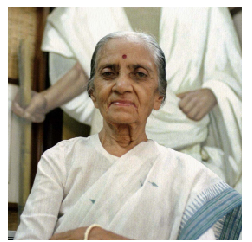
Parallel Government
- Emergence of parallel governments in various parts of the country was a significant feature of the Quit India Movement 1942.
- The first of such parallel government was proclaimed in Ballia, in East U.P., in August 1942 under the leadership of Chittu Pande.
- In Tamluk, located in the Midnapur district of Bengal, the Jatiya Sarkar was established on December 17, 1942, and continued until September 1944.
- The Jatiya Sarkar provided grants to schools, carried out cyclone relief efforts, and organized an armed Vidyut Vahini.
- It also established arbitration courts and redistributed surplus paddy from wealthier individuals to the poor.
- Satara, in Maharashtra, became the base of the longest-lasting and most effective parallel government, known as the Prati Sarkar, with Nani Patil as its key leader.
- It organized attacks on government collaborators, informers, and lower-level officials, as well as conducted Robin Hood-style robberies.
- Nyayadan Mandals, or people’s courts, were set up, and justice was dispensed.
- Prohibition was enforced, and ‘Gandhi marriages’ were held, where untouchables were invited and no ostentation was permitted.
Attack on Government Authorities
- Attack on the Government authorities also came to become a notable feature of the Quit India Movement 1942.
- Peasant activities were completely focused on targeting symbols of British authority, with no incidents of violence against zamindars.
- Government officials, particularly those at lower levels in the police and administration, were notably supportive of the movement.
- They provided information, gave shelter, and even helped monetarily.
- In fact, the erosion of loyalty among British Government officers was one of the most striking features of the Quit India struggle.
Gandhi’s Response
- In February 1943, Gandhi began a fast in jail in response to the government’s repeated demands for him to condemn the violence associated with the Quit India Movement.
- Gandhi not only refused to condemn the use of violence by the masses, but also clearly placed the responsibility for it on the Government.
- He sais, it was the ‘leonine violence’ of the state that had provoked the masses.
Participation in Quit India Movement 1942
Various sections of the Indian society participated in the Quit India Movement, marking a new high in terms of the mass participation in the national movement.
- Youth: The youth were in the forefront of the struggle as had been in the case of the earlier mass struggles.
- Workers: Workers were prominent participants, and organized long strikes, braving police repression in the streets.
- Women: Women, especially college and school girls, played a very crucial role.
- Sucheta Kripalani, Usha Mehta and Aruna Asaf Ali were prominent women organisers of the underground activities.
- Peasants: Peasants from all social strata, both affluent and poor, were at the core of the movement, particularly in East U.P. and Bihar, Midnapur in Bengal, and Satara in Maharashtra, as well as in other regions like Andhra, Gujarat, and Kerala.
- Zamindars: Many smaller zamindars, especially in UP and Bihar, also participated.
- Even the big zamindars denied assistance to the British in crushing the rebellion.
- The most prominent of them was the Raja of Darbhanga.
- Even the big zamindars denied assistance to the British in crushing the rebellion.
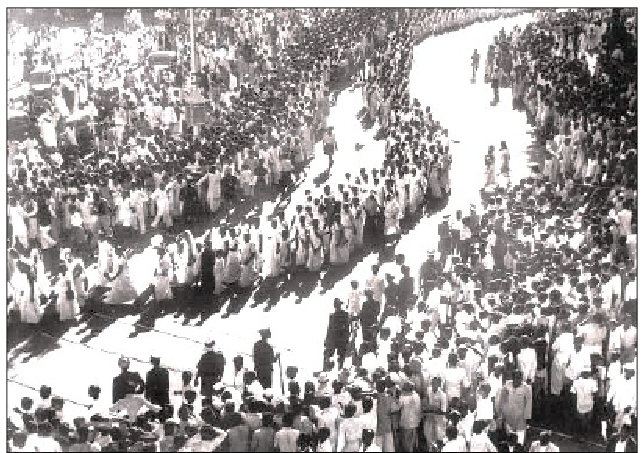
Muslim Participation in Quit India Movement 1942
- Although Muslim mass participation in the Quit India Movement was relatively low, it is also true that even supporters of the Muslim League assisted by providing shelter to underground workers and refrained from acting as informers.
- There was a complete lack of communal clashes, indicating that although the movement may not have garnered substantial support from the majority of the Muslim masses, it did not provoke their hostility either.
Reasons for Failure of Quit India Movement 1942
Some of the most prominent reasons for the failure of the Quit India Movement (QIM) can be cited as follows:
- People were left without leaders, and in the absence of leadership and proper organisation, people could not stand for a long time before the mighty strength of an imperial power of Government.
- The movement did not get support from the Muslim League and the Communists, which also deterred the movement.
- According to Jayaprakash Narain, the movement failed due to a lack of coordination among the Congress people agitating in different parts of the country.
- There was also no clear-cut programme of action.
- Another weakness that can be seen is that it was limited only to peasants, students, and the lower middle class.
- There was no or less participation from the upper middle class as they were losing their faith in the Gandhian methods of action.
Significance of Quit India Movement 1942
Though the movement fizzled our over a period of time, it played an important role in the history of India.
- It established the truth that it was no longer possible to rule India without the wishes of Indians.
- Thus, it gave a clear-cut message to the British “pack-up and leave”.
- Participation of government officials in large numbers resulted in erosion of government loyalty.
- It brought India to the verge of getting independence and hastened the process of formulation of the Constitution.
- Through the movement, we got support from other powerful nations, particularly the USA and China, who started favouring India’s independence.
- Several parallel governments established during the movement overthrew the British Government in their respective regions and instead established a system of Local Self-Governance.
- This not only eroded British authority but also helped develop the system of local self-governance.
- As established national leaders were arrested even before the launch of this movement, it was led by local leaders.
- This helped establish these local leaders, who came to play a pivotal role in future.
- It enhanced public morale and anti-British sentiments.
- People were ready to sacrifice their careers, property and even lives.
- Some creative works were taken up during this movement. e.g. formation of Gram Panchayat and Gram Seva Dal by Congress Committees.
- This helped achieve the goals of social reform and development.
Conclusion
The Quit India Movement 1942 was a critical phase in the Indian struggle for independence, reflecting the growing demand for self-rule and the resilience of the Indian people. It demonstrated the effectiveness of mass mobilisation and civil disobedience in challenging colonial rule. It made it amply clear that days of Britishers in India are now numbered as it brought India on the verge of getting independence.
Frequently Asked Questions (FAQs)
When was the Quit India Movement started?
The Quit India Movement started in the year 1942, precisely on 9th August, 1942.
Who started Quit India Movement?
It was started by the Congress, with Gandhi in the lead.
What is the other name of Quit India Movement?
The movement is also known as ‘Bharat Chhodo Andolan’ and ‘August Kranti’.
What was the slogan of Quit India Movement?
The slogan of QIM was ‘Quit India’.
Who gave the slogan ‘Quit India’?
The slogan of the QIM ‘Quit India’ was given by Mahatma Gandhi.
Who led Quit India Movement?
Gandhi was announced as the leader of the movement. However, he was arrested just after the launch of the movement, and hence the movement was mostly rendered leaderless.
When is Quit India Day celebrated in India?
Quit India Day is celebrated in India on 8th August every year to commemorate the launch of the Quit India Movement in the year 1942.
